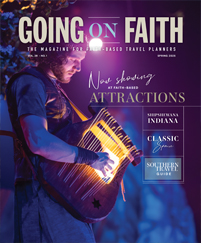
From the throngs of tourists crowding Tiananmen Square in Beijing to the modern architectural marvels of the Bund in Shanghai, the evidence abounds: For China, change is the new constant.
For centuries, China has steeped in its own tradition, like a bundle of green leaves steeping in hot water. But recent waves of liberalization, modernization and growing wealth are bringing new elements and experiences to this land of dynasty and ritual. And although the changes cause a certain amount of social, political and commercial pressure, they are also creating a fascinating opportunity for visitors. Today’s traveler can revel in the wonders of China’s imperial past while also experiencing the contagious excitement of a people who are driving headlong into the future.
I spent 10 days visiting Beijing, Shanghai and Xi’an in February on a familiarization tour with ChinaPlus USA and the China National Tourist Office. As I talked to locals, visited historic shrines and sampled the best of modern Chinese food and culture, I found a country at a crossroads of the past and the future.
A simple drive through Beijing’s midday traffic gives Chris Lee a sense of just how much has changed in China. Owner of ChinaPlus and a longtime tour operator in the country, Lee has seen dynamic growth and economic development catapult this city of 19 million residents into the modern era.
“I left China 21 years ago,” he told our group as we made our way through the city streets. “At that time, there were more bicycles. Today, there are more cars than bicycles.”
Our destination at the end of that drive was also the first stop on our tour: Tiananmen Square in the heart of the city. The square measures nearly one kilometer long, making it the largest public square in the world, and is a prime example of the duality of life in modern China. Large modern buildings surround the historic square, once the site of a bloody uprising but now a tribute to the ruling Communist party. The most notable building on the square, the mausoleum of former party chairman Mao Tse-tung, houses a glass coffin that holds Mao’s pickled remains. On the opposite side of the square, the large Gate of Heavenly Peace marks the entrance to the Forbidden City and is fitted with a large portrait of Mao.
As we toured the square, our small group of Americans caught the attention of many Chinese locals who had come to see the landmark for themselves. Several stopped and asked us to pose with them for photos. Our local guides explained that most of these Chinese tourists came from the provinces and, flush with newfound wealth, were making a once-in-a-lifetime trip to their nation’s capital. Many, he said, had never seen an American in person.
On the other side of the large gate, the Forbidden City awaited us, shrouded in February fog.
Constructed some 600 years ago for the emperors of the Ming dynasty, the Forbidden City housed the families and servants of Chinese royalty until 1921. Throughout those centuries, few common citizens ever glimpsed the inside of the palace because only emperors and their entourages were allowed inside the massive and ornate complex. After the dynasty fell in the early 1920s, the new government opened the complex to the public as a massive historic site, now known officially as the Palace Museum.
Once inside the gate, we found ourselves separated from the noise of modern Beijing and surrounded by a world of luxurious buildings. These garrisons, halls and living quarters were meticulously handcrafted and painted with colors and imagery that reflected the great dynastic and mythic traditions that span Chinese history. Although most people call it the Forbidden City, you could just as easily call it the Never-ending City: The palace complex has hundreds of buildings with a total of 9,999 rooms — one room short of the 10,000 rooms in heaven, according to our local guide, Eddy. And only one-third of the complex is open to visitors.
As we toured the buildings, Eddy pointed out many of the traditional beliefs and superstitions that found their way into the Forbidden City’s architecture. At the center of the complex, two larger-than-life lions guard the entrance to the emperor’s throne room, a brilliant red building set upon a three-tiered marble terrace.
“Lions are considered the best guardians to keep away the evil spirits,” Eddy said. “That’s why you find them in front of every important site in China. The bigger the lions, the more important the site is.”
The tour took us into the private palace garden and the royal family’s living quarters. Eddy told us about the multiple wives and dozens of concubines that lived with the emperor, and as he did, I couldn’t help but compare this lavish lifestyle to the times of Solomon and the Old Testament kings. That the emperors still lived this way 90 years ago demonstrates how much has changed in China in a relatively short time.










